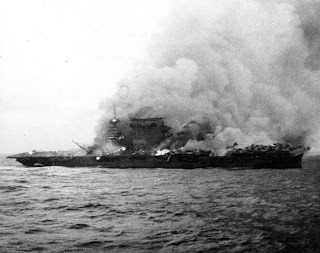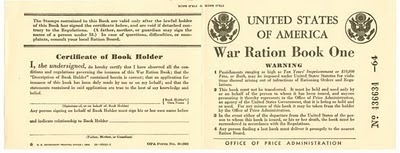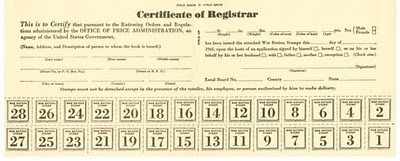Sarah Sundin's Blog, page 478
May 8, 2012
Happy V-E Day Anniversary!
 Sixty-seven years ago today, the Allies celebrated Victory in Europe. People went to church and prayed. Bells rang. Parades rejoiced through small towns and cities.
Sixty-seven years ago today, the Allies celebrated Victory in Europe. People went to church and prayed. Bells rang. Parades rejoiced through small towns and cities.The cost of victory was high. Tens of millions were killed in battle. More tens of millions were murdered and starved in concentration camps. And more millions perished as civilian casualties of bombing. Many of Europe's great cities lay in heaps of rubble. The infrastructure of factories, railways, bridges, and roads lay in tangled ruins.
But the cost of defeat would have been even higher. The fascist dictators had conquered most of Europe and ruled with totalitarian brutality. They trampled the freedoms of the occupied lands, freedoms we take for granted - to speak our mind, to worship as we please, to associate with the people of our choice, to keep the fruits of our labor, and even to listen to the radio. They ruled through fear, and it was legitimate fear. Entire villages were emptied and massacred. Dissenters were tortured and executed. Anyone who didn't fit in the fascist regime due to ethnicity, religion, or mental or physical incapacity, was eliminated with horrid efficiency.
We reap the benefits of that victory today. Despite today's economic woes and terrorist threats, we live in relative prosperity and peace - and we have freedom. We must never forget what a blessing freedom is - or how much it costs. Use it wisely. Use it well.
Thank you to all those veterans who set aside their individual rights to ensure freedom for the future. God bless you.
Published on May 08, 2012 05:00
Today in World War II History
 70 Years Ago—May 8, 1942: Battle of the Coral Sea concludes: US deters Japanese landing at Port Moresby, New Guinea, first carrier-on-carrier battle in history. In Battle of the Coral Sea, US carrier Lexington is badly damaged and scuttled. Alvin York, WWI Medal of Honor recipient “Sergeant York,” commissioned as major.
70 Years Ago—May 8, 1942: Battle of the Coral Sea concludes: US deters Japanese landing at Port Moresby, New Guinea, first carrier-on-carrier battle in history. In Battle of the Coral Sea, US carrier Lexington is badly damaged and scuttled. Alvin York, WWI Medal of Honor recipient “Sergeant York,” commissioned as major.
Published on May 08, 2012 03:00
May 7, 2012
Today in World War II History
70 Years Ago—May 7, 1942: In the Battle of the Coral Sea, US tanker Neosho and destroyer Sims, and Japanese carrier Shoho sunk. Japanese execute José Abad Santos, chief justice of Philippines for refusing to participate in puppet government.

Published on May 07, 2012 03:00
May 6, 2012
Today in World War II History
70 Years Ago—May 6, 1942: US Maj. Gen. Jonathan Wainwright surrenders on Corregidor, unconditional surrender of all US and Filipino troops in Philippines, 13,000 POWs. US Gen. Joseph Stilwell sets off on foot from Burma toward India with 100 military personnel and civilians.

Published on May 06, 2012 03:00
May 5, 2012
Make It Do - Sugar Rationing in World War II
 What could be more American than Hershey bars, homemade cookies, and birthday cake? During World War II these items were hard to come by. Today marks the 70th anniversary of the start of sugar rationing in the United States.
What could be more American than Hershey bars, homemade cookies, and birthday cake? During World War II these items were hard to come by. Today marks the 70th anniversary of the start of sugar rationing in the United States.Short on Sugar
When the Japanese conquered the Philippines in the early months of 1942, the United States lost a major source of sugar imports. In addition, shipments from Hawaii had to be curtailed 50 percent as cargo vessels were diverted for military purposes. The supply fell by one-third. To ensure adequate supplies for manufacturers, the military, and civilians, sugar became the first food item to be rationed. Manufacturers initially received supplies at 80 percent of pre-war levels, but that was reduced over time.
Registration for Rationing
On April 27, 1942, families registered for ration books at their local elementary schools. One book was issued for each family member and had to be surrendered upon death. The sale of sugar was halted for one week to prepare for the program. To discourage hoarding, each family had to report how much sugar they had in stock - over a certain amount - and the corresponding number of stamps was removed from the book.
Ration Books

On May 5, 1942, each person in the United States received a copy of War Ration Book One, good for a 56-week supply of sugar. Initially, each stamp was good for one pound of sugar and could be used over a specified two-week period. Later on, as other items such as coffee and shoes were rationed, each stamp became good for two pounds of sugar over a four-week period. The ration book bore the recipient's name and could only be used by household members. Stamps had to be torn off in the presence of the grocer.
If the book was lost, stolen, or destroyed, an application had to be submitted to the Ration Board for a new copy. When entering the hospital for greater than ten days, the ration book had to be brought along.

Canning
Home canning was encouraged during the war - however, canning requires sugar. To provide for this patriotic need, each person could apply for a 25-pound allotment of canning sugar each year. Each local ration board determined the quantity and season of availability based on the local harvest. A special canning sugar stamp in the ration book had to be attached to the application. In 1944, confusion arose when "spare canning sugar stamp 37" was called for - but many people mistakenly used the regular sugar stamp 37, invalidating it for normal household purchases.
Shortages
Just because you had a sugar stamp didn't mean sugar was available for purchase. Shortages occurred often during the war, and in early 1945 became acute. As Europe was liberated from Nazi Germany, the US took on the main responsibility for providing food to those ravaged countries. On May 1, 1945, the sugar ration was cut to 15 pounds per year for household use and 15 pounds per year for canning - a total of eight ounces per week. Sugar was the last product to be rationed after the war. The program was discontinued in June 1947.
Housewives learned to be creative, using saccharine, corn syrup, and even packets of Jell-O as sugar substitutes. Women's magazines featured recipes with reduced sugar or creative substitutes.
Do you have any stories of wartime sugar rationing?
Published on May 05, 2012 05:00
Today in World War II History
 70 Years Ago—May 5, 1942: Japanese land on Corregidor. Sugar rationing begins in the US. British land at Diego Suarez in Vichy-French Madagascar, fearing Japanese takeover.
70 Years Ago—May 5, 1942: Japanese land on Corregidor. Sugar rationing begins in the US. British land at Diego Suarez in Vichy-French Madagascar, fearing Japanese takeover.
Published on May 05, 2012 03:00
May 4, 2012
Today in World War II History
70 Years Ago—May 4, 1942: American Volunteer Group (“Flying Tigers”) retreats from Loiwing, Burma to Kunming, China. Pulitzer Prize awarded to Ellen Glasgow for In This Our Life.

Published on May 04, 2012 03:00
May 3, 2012
Book Beat - A Wedding Transpires on Mackinac Island
 Although I've never been there, Michigan's Mackinac Island has always fascinated me as an automobile-free oasis. Cara Putman's
A Wedding Transpires on Mackinac Island
takes you to this vacation spot for romance and mystery.
Although I've never been there, Michigan's Mackinac Island has always fascinated me as an automobile-free oasis. Cara Putman's
A Wedding Transpires on Mackinac Island
takes you to this vacation spot for romance and mystery.For lawyer Alanna Stone, Mackinac is not a relaxing destination, but a painful reminder of the past that she's avoided for over a decade. When family illness forces her to return to Mackinac to run her mother's art gallery, Alanna dreads facing the memories of the fatal accident that ruined her brother's reputation and soured her on the locals. Even more, she dreads facing Jonathan Covington, her first love, and Jonathan isn't thrilled to see the woman who broke his heart in the cabin next door.
Alanna's return does more than trigger memories of first love - it unearths secrets that certain people want to remain buried.
A Wedding Transpires on Mackinac Island is a fun and exciting read, with well-drawn characters and a lovely setting that inspires both relaxation and mystery. As a lawyer herself, Cara Putman makes the criminal and legal aspects of the story intriguing and understandable. I highly recommend this novel.[image error]
Published on May 03, 2012 10:34
Today in World War II History
70 Years Ago—May 3, 1942: Japanese take Tulagi and Florida Islands in Solomons, right next to Guadalcanal.
[image error]
[image error]
Published on May 03, 2012 03:00
May 2, 2012
Today in World War II History
70 Years Ago—May 2, 1942: President Roosevelt extends Lend-Lease assistance to Iraq and Iran. Japanese bomb powder magazine on Corregidor, 60 killed.

Published on May 02, 2012 03:00



